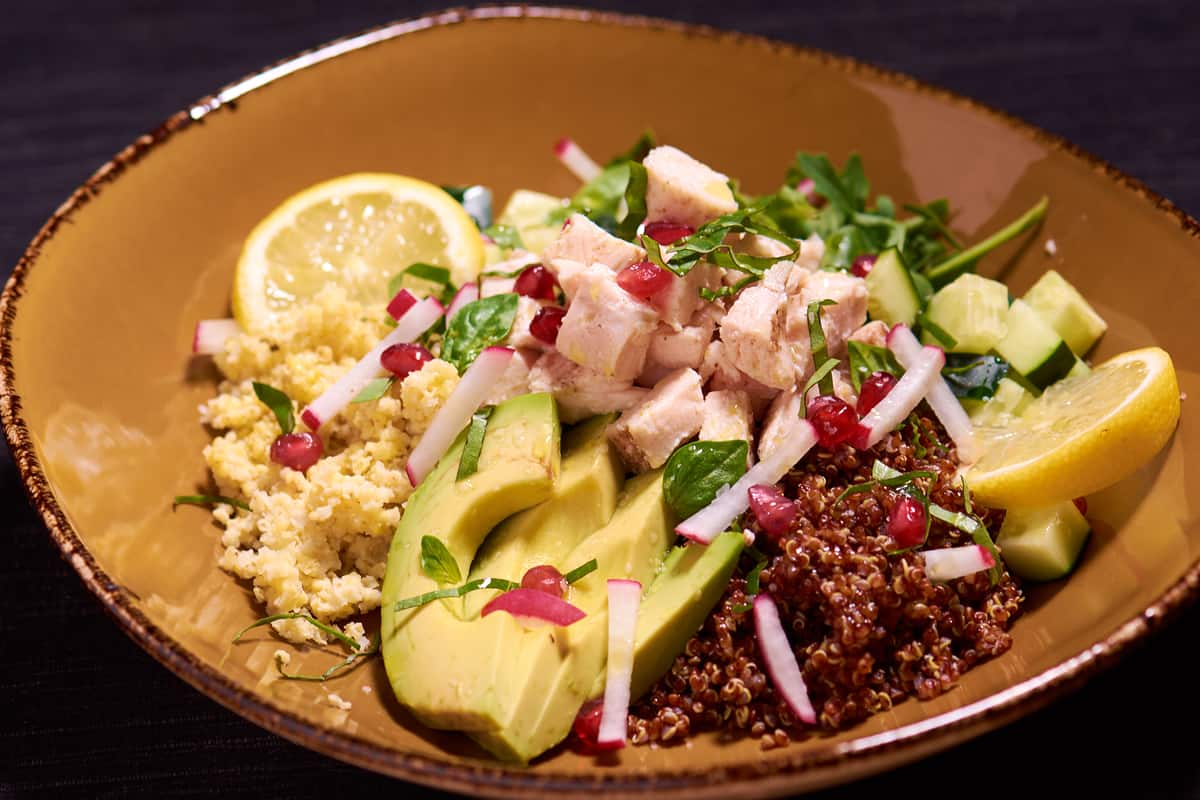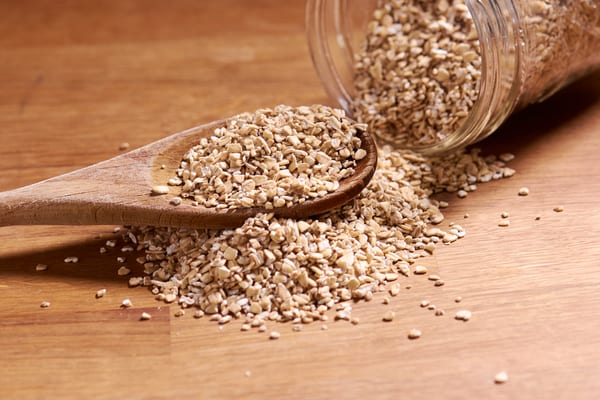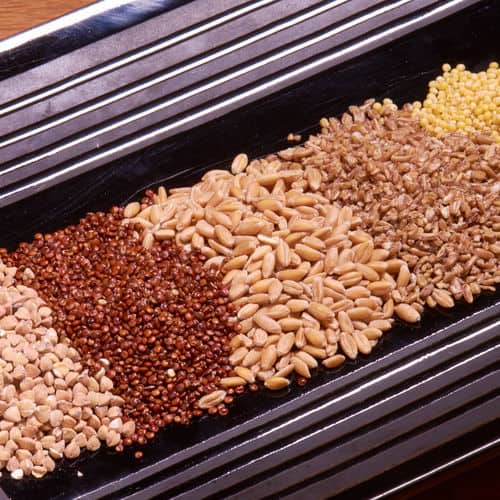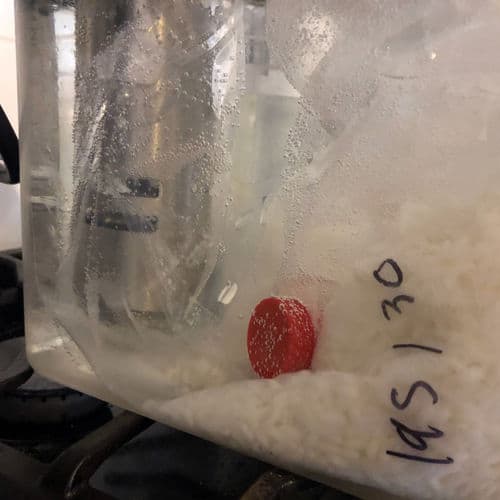-
Sous Vide Time and Temperatures
Sous Vide Time and Temps
Sous Vide Time and Temps
Sous Vide Temps
- All Sous Vide Temperatures
- Sous Vide Beef Temperatures
- Sous Vide Chicken Temperatures
- Sous Vide Duck Temperatures
- Sous Vide Fish Temperatures
- Sous Vide Vegetables Temperatures
- Sous Vide Infusions Temperatures
- Sous Vide Lamb Temperatures
- Sous Vide Pork Temperatures
- Sous Vide Shellfish Temperatures
- Sous Vide Turkey Temperatures
- Recipes Recipes Recipes Recipes
- Getting Started Guides Getting Started Guides Getting Started
- Equipment and Tools Equipment and Tools Equipment Equipment and Tools
- More Resources More Resources Resources More Resources
Sous Vide Time and Temperature Charts
Welcome to the Amazing Food Made Easy sous vide time and temperature charts. To view the recommended cooking suggestions for an item just select it from the menu below. You can also view all the sous vide time and temperatures.
What Would You Like to Sous Vide?
How to Sous Vide Grains and Dough
Quick Links
- Sous Vide Grains Times and Temperatures
- Sous Vide Grain Recipes
- How to Cook Sous Vide Grains
- What To Sous Vide Grains In
- Temperature Breakdown
- How Much Liquid to Use
- How Long to Cook
- Simple Sous Vide Grains Recipe
- Sous Vide Grain Tips
How to Cook Sous Vide Grains
For a long time I never bothered to cook grains using sous vide, they were just so easy to make on the stove...or so I thought!
A year or two ago I began eating oatmeal for breakfast most mornings, and the cleanup of the pot started to become a hassle. I finally turned to sous vide to try and solve it and I loved the results. Not only was there no clean up, I also didn't have to watch a pot to make sure it didn't boil over or dry out. And I could definitely use that help when I'm sleepy in the mornings and not thinking straight!

From oatmeal, I branched out into other grains and now I cook the majority of them using sous vide. I just love the convenience and not having to worry about whether the pot is boiling, or too dry or any other factors.
It is also simple to mix and match grains in one container, as long as they cook for the same amount of time. This makes it easy to add some variety to my meals without much extra effort.
If you are interested in learning more about how to sous vide grains, then you can read below, or just skip to my sous vide grain recipes!
What to Sous Vide Grains In
I usually cook the grains in 1/2-pint or 1-pint Mason jars, depending on how much I need. I'll often leave the grains in the jars, chill them in cold water, and refrigerate them for later use. You can also seal the grains and water in a bag using a vacuum sealer, as long as it handles liquids without making a mess, or Ziploc bags.

Sous Vide Grain Temperature
The temperature used for most grains needs to be above 183°F (83.8°C). It can go as hot as you want, though I usually just use 185°F (85°C) to give me some wiggle room in case my circulator is slightly off. The higher the temperature, the less time it will take to cook the grains.
How Much Liquid to Use When Sous Viding Grains
The amount of liquid needed is dependent on the grain, but is usually about 80% of what you usually need due to the lack of evaporation during the cooking process.
The amount of liquid will also depend on how you like the texture of that specific grain to be. For instance, some people like dry oatmeal, and others like wet and runny oatmeal. They would need different amounts of water to accomplish that.
You can also use pretty much any liquid in the containers to cook the grains. I've used water, stock, and milk as the main liquids as well as splashes of vinegar, soy sauce, and Worcestershire sauce to flavor it. You would want to be careful with alcohol, just because it will not burn off at all.
Sous Vide Grain Timing
The three things that affect the timing are the size of the container, the temperature it is cooked at, and the tenderness of the grain.
How Container Size Affects Grain Timing
As I mentioned above, I almost always use 1/2-pint or 1-pint Mason jars to cook the grains. These take slightly different amounts of time to cook. In my recipes I give the size of the container I usually use, but feel free to experiment to see what size and timing works best for you.
How the Temperature Affects Sous Vide Grain Times
As I mentioned above, I generally use 185°F (85°C) for all my grains. You can pick a temperature that works for you, but I haven't found much of a difference in the end result. I use 185°F just to ensure the bath will be hot enough. If you are just learning, I recommend using that temperature with my recipes until you have a better feel for how it works.

How Grain Type Affects Sous Vide Timing
Like different cuts of meat, different types of grain have different tendernesses and need different amounts of time to cook fully. Almost all types of grain will give you cooking instructions, and in general it takes about 20% longer to sous vide the grains than is called for with "on the stove" instructions. This difference is from not plunging the grains directly into the boiling water; it takes time to heat through the glass jar, and the temperature you are cooking at is lower than it normally is on the stove.
Because the different types of grain cook at vastly different lengths of time, I recommend trying to stick to 1 or 2 types when you are getting started. This will make it easier to find the sweet spot you are looking for. Don't forget that the brand will also affect the timing, because different brands of the "same" grain might actually be different varieties. Below I have some of the times that I have found to work well for various types of grain. All grains are for the Bob's Red Mill brand and assume a 1/2-pint Mason jar at 185°F (85°C).
| Buckwheat |
1/3 cup + 1 tablespoon buckwheat 2/3 cup liquid |
20 minutes |
| Bulgur |
1/2 cup bulgur 2/3 cup + 1 tablespoon liquid |
25 minutes |
| Quinoa |
1/2 cup quinoa 2/3 cup + 1 tablespoon liquid |
20 minutes |
| Farro | 1/2 cup Bob's Red Mill Farro30 minutes | |
| Frekneh |
1/2 cup frekneh 3/4 cup liquid |
20 minutes |
| Oatmeal |
1/3 cup Quick Cook Steel Cut Oats 2/3 cup liquid |
30 minutes |
| Rye | 1/4 cup rye 1/2 cup liquid |
25 minutes |
| Spelt |
1/2 cup spelt 1/2 cup liquid |
80 minutes |
| Wheatberry |
1/3 cup + 2 tablespoons wheatberry 2/3 cup liquid |
2 hours |
Want to Get More From Sous Vide?
Do you worry you're not getting the most out of your sous vide machine?
Quickly level up your sous vide game! Make perfect meats, master searing, and discover the sous vide times and temperatures you need to make everyday food amazing and impress your friends and family with the Sous Vide Quick Start email course!
Simple Sous Vide Grains Recipe
Most grains are convenient to cook with sous vide, both because it makes it easy to replicate your results but also for the lack of cleanup required. I usually cook the grains in 1-pint or 1-quart Mason jars, depending on how much I need. I'll often leave the grains in the jars, chill them in cold water, and refrigerate them for later use. You can also mix and match grains, as long as they get done at about the same time.
Simple Sous Vide Grains Recipe
- Published: June 6, 2020
- By
- Total Time: 20 Minutes
- Cooks: 183°F (83.9°C) for 20 to 60 minutes
- 1 pint
Ingredients for Simple Sous Vide Grains
For the Sous Vide Grains
- 2/3 cup grains
- 1 1/3 cups water
- A dash of salt
Want more great content like this? My free Sous Vide Quick Start course will help you get the most out of sous vide. You can start consistently creating amazing food with sous vide today!
Cooking Instructions for Simple Sous Vide Grains
For the Sous Vide Grains
Preheat a water bath to 183°F (83.9°C).
Combine the grains, water, and salt in a pint Mason jar. Hand tighten the lid, making sure not to over tighten it. Shake up the Mason jar then carefully place it in the water bath. Cook the grains for 20 to 60 minutes, until the water is absorbed and the grains are cooked through. Remove from the Mason jar and fluff with a fork before serving.

For more information on the cooking times you can read my detailed article which addresses why is there a range in sous vide cooking times.
Nutritional Information for Simple Sous Vide Grains
- Quinoa: Nutritional:
- Calories: 156
- Fat: 3g
- Protein: 6g
- Carbohydrate: 27g
- Fiber: 12g
- Sugar: 0g
- Cholesterol: 0mg
Sous Vide Grain Tips
If you are looking for some recipes to use sous vide grains in, I do have a whole chapter dedicated to grain bowls in my Healthy Sous Vide cookbook.
Use Warm Water
I always use warm water to fill the Mason jars. This serves two purposes, first is to slightly speed up the cooking time. The second reason, and the most important one, is the warm water helps temper the glass container and prevents breaking. If you add a really cold Mason jar to the hot water bath, there is a chance it will shatter. Using warm water greatly reduces the risk of that occurring.

Finger Tighten the Lids
If you are using Mason jars, make sure you only finger tighten the lids. This allows the air to escape as it heats.
Water Levels Usually Aren't Important
I generally just submerge my Mason jars in the water bath, but some people think it is better to only fill the bath full enough to come up right below the lids. You can go either way you feel most comfortable.
Use a Mason Jar Grabber
Getting the Mason jars into and out of the water bath can be pretty rough if you don't have the right tools. I recommend a jar lifter to help out. It only costs $5 and makes the whole process very safe and easy.
Give Them a Shake
For longer-cooking grains, giving them a shake or two during the cooking process will help keep the liquid evenly distritbuted throughout the jar.

Taste Until Cooked
To originally come up with my times, I would taste the grains along the way to see how long it took them to be fully cooked. It's easy to open the container, taste a small amount, and then put it back into the water bath until it is finished. So don't worry if the grains aren't done when you expected them, just put them back in for a little longer and you should be all set.
Make Extras
I almost always make more grains than I need for dinner so I can use them in lunches all week long. Once they are done cooking I chill them in cold water and then I store them, still in the Mason jar, in the refrigerater until I want to use them. This makes it super convienent to use grains throughout the week without having to make them every day.
Sous Vide Grain Recipes and Articles
If you are looking for some recipes to use sous vide grains in, I do have a whole chapter dedicated to grain bowls in my Healthy Sous Vide cookbook.
 Sous Vide Cinnamon Raisin Oatmeal Recipe
Sous Vide Cinnamon Raisin Oatmeal Recipe  Sous Vide Farro Recipe
Sous Vide Farro Recipe  Pork and Freekeh Bowl Recipe
Pork and Freekeh Bowl Recipe  Simple Sous Vide Grains Recipe
Simple Sous Vide Grains Recipe  Sous Vide Pumpkin Risotto Recipe
Sous Vide Pumpkin Risotto Recipe
What are your favorite ways to sous vide grains? Have any follow up questions you need answered? Let me know in the comments or on the Exploring Sous Vide Facebook group.
New to Sous Vide?
I'd like to invite you to join my FREE Sous Vide Quick Start email course. It will help you make perfect meats, master searing, and discover the sous vide times and temperatures you need to make everyday food amazing...and impress your friends and family.
Sous Vide Grains and Dough Temperatures and Times
. Below are more sous vide time and temperatures for many of the specific items.
Sous Vide Buckwheat
I usually combine 1/3 cup + 1 tablespoon buckwheat with 2/3 cup liquid and cook it at 185°F (85°C) for 20 minutes.
- Standard: 185°F (85°C) for 20 minutes (85.0ºC)
- How to sous vide grains and dough buckwheat
Sous Vide Bulgur

I usually combine 1/2 cup bulgur with 2/3 cup + 1 tablespoon liquid and cook it at 185°F (85°C) for 25 minutes.
- Standard: 185°F (85°C) for 25 minutes (85.0ºC)
- How to sous vide grains and dough bulgur
Sous Vide Dough Proofing

Dough is best proofed at a specific temperature, and using my sous vide machine to do that is super convenient. I usually go for between 75°F and 90° (24°C and 32°C), depending on the type of dough.
dough
- Yeast Jump Start (Eric Villegas): 100°F (38°C) for 15 to 20 minutes (37.8ºC)
- Dough Proofing: Depends on Recipe for 15 to 120 minutes (26.7ºC)
- Jason's Dough Proofing: 1 to 2 hours for 75°F and 90° (24°C and 32°C) (26.7ºC)
- How to sous vide grains and dough dough proofing
Sous Vide Farro

I usually combine 1/2 cup Bob's Red Mill Farro with 2/3 cup liquid and cook it at 185°F (85°C) for 30 minutes.
- Standard: 185°F (85°C) for 30 minutes (85.0ºC)
- How to sous vide grains and dough farro
Sous Vide Frekneh

I usually combine 1/2 cup frekneh with 3/4 cup liquid and cook it at 185°F (85°C) for 20 minutes.
- Standard: 185°F (85°C) for 20 minutes (85.0ºC)
- How to sous vide grains and dough frekneh
Sous Vide Oatmeal

I usually combine 1/3 cup Quick Cook Steel Cut Oats with 2/3 cup liquid and cook it at 185°F (85°C) for 30 minutes.
- Standard: 185°F (85°C) for 30 minutes (85.0ºC)
- How to sous vide grains and dough oatmeal
Sous Vide Pizza
It might not work well to sous vide a whole pizza, but you can definitely use it for parts of a pizza. Using sous vide to proof dough works pretty well. You can also use sous vide to make tomato sauce or ricotta cheese.
Sous Vide Quinoa

I usually combine 1/2 cup Quinoa with 2/3 cup liquid and cook it at 185°F (85°C) for 20 minutes.
- Standard: 185°F (85°C) for 20 minutes (85.0ºC)
- How to sous vide grains and dough quinoa
Sous Vide Rye
I usually combine 1/4 cup rye with 1/2 cup liquid and cook it at 185°F (85°C) for 25 minutes.
- Standard: 185°F (85°C) for 25 minutes (85.0ºC)
- How to sous vide grains and dough rye
Sous Vide Spelt
I usually combine 1/2 cup spelt with 1/2 cup liquid and cook it at 185°F (85°C) for 80 minutes.
- Standard: 185°F (85°C) for 80 minutes (85.0ºC)
- How to sous vide grains and dough spelt
Sous Vide Wheatberry
I usually combine 1/3 cup + 2 tablespoons wheatberry with 2/3 cup liquid and cook it at 185°F (85°C) for 2 hours.
- Standard: 185°F (85°C) for 2 hours (85.0ºC)
- How to sous vide grains and dough wheatberry


















